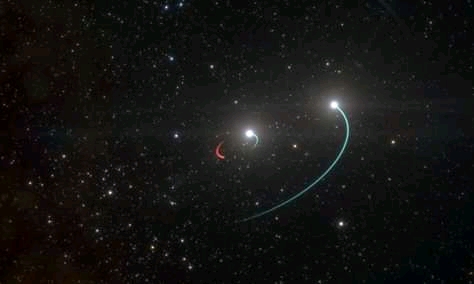Satellites and telescopes took a deep look into Jupiter's atmosphere
A team of researchers led by Michael Wong at the University of California, Berkeley and including Amy Simeon of NASA Goddard space flights center in Maryland, and imkede Peter of UC Berkeley are combining multiwavelenghth observation from hubble and gemini with close up views from Juno orbit.
Jupiter's constant storm are gigantic compared to Earth's, with thunderheads reaching 40 miles from base to top five times taller than typical thunderheads on earth and powerful lighting flashes up to three times more energetic than earth largest bolts.
Like lightning on earth, Jupiter lightning bolts act like radio transmitters, sending out radio waves as well as visible light when they flash across the sky.
Evert 53 days, Juno races low over the storm systems detecting radio signals known as sperics and whistlers, which can then be used to map lightning even on the dayside of the planet or from deep clouds where flashes are not otherwise visible.
Jack-o'-lantern Red Spot
So images from Juno as well as previous missions to Jupiter revealed dark features within the great red spot that appear, disappear and change shape over time.
Now, with the ability to compare visible light images from hubbHu with thermal infared images from gemini captured within hours of each other, it is possible to answer the question. Regions that are dark indicate that they are holes in the cloud layer. In cloud free regions, heat from Jupiter's interior that is otherwise blocked by high level clouds is free to escape into space and therefore appears bright in gemini images.
"It is kinda like a jack-o'-lantern" said Wong.
Join us for more on our social media platforms
Twitter
twitter.com/jabarspacenews
Instagram
Instagram.com/jabarspacenews
Radio light show
Jupiter's constant storm are gigantic compared to Earth's, with thunderheads reaching 40 miles from base to top five times taller than typical thunderheads on earth and powerful lighting flashes up to three times more energetic than earth largest bolts.
Like lightning on earth, Jupiter lightning bolts act like radio transmitters, sending out radio waves as well as visible light when they flash across the sky.
Evert 53 days, Juno races low over the storm systems detecting radio signals known as sperics and whistlers, which can then be used to map lightning even on the dayside of the planet or from deep clouds where flashes are not otherwise visible.
Jack-o'-lantern Red Spot
So images from Juno as well as previous missions to Jupiter revealed dark features within the great red spot that appear, disappear and change shape over time.
Now, with the ability to compare visible light images from hubbHu with thermal infared images from gemini captured within hours of each other, it is possible to answer the question. Regions that are dark indicate that they are holes in the cloud layer. In cloud free regions, heat from Jupiter's interior that is otherwise blocked by high level clouds is free to escape into space and therefore appears bright in gemini images.
"It is kinda like a jack-o'-lantern" said Wong.
Join us for more on our social media platforms
 |
| Credit: NASA |
 |
| Add caption |
Credit: NASA
Gemini & Juno mission
twitter.com/jabarspacenews
Instagram.com/jabarspacenews





free keyword research
ReplyDeletehttps://www.semrush.com/lp/keyword-magic-think/en/?ref=5322110841&utm_campaign=landing_keyword_magic_tool&utm_source=berush&utm_medium=promo&utm_term=60
http://www.jabarspacenews.com/the-5-weirdest-galaxy-you-should-know-about-this-2021
ReplyDelete